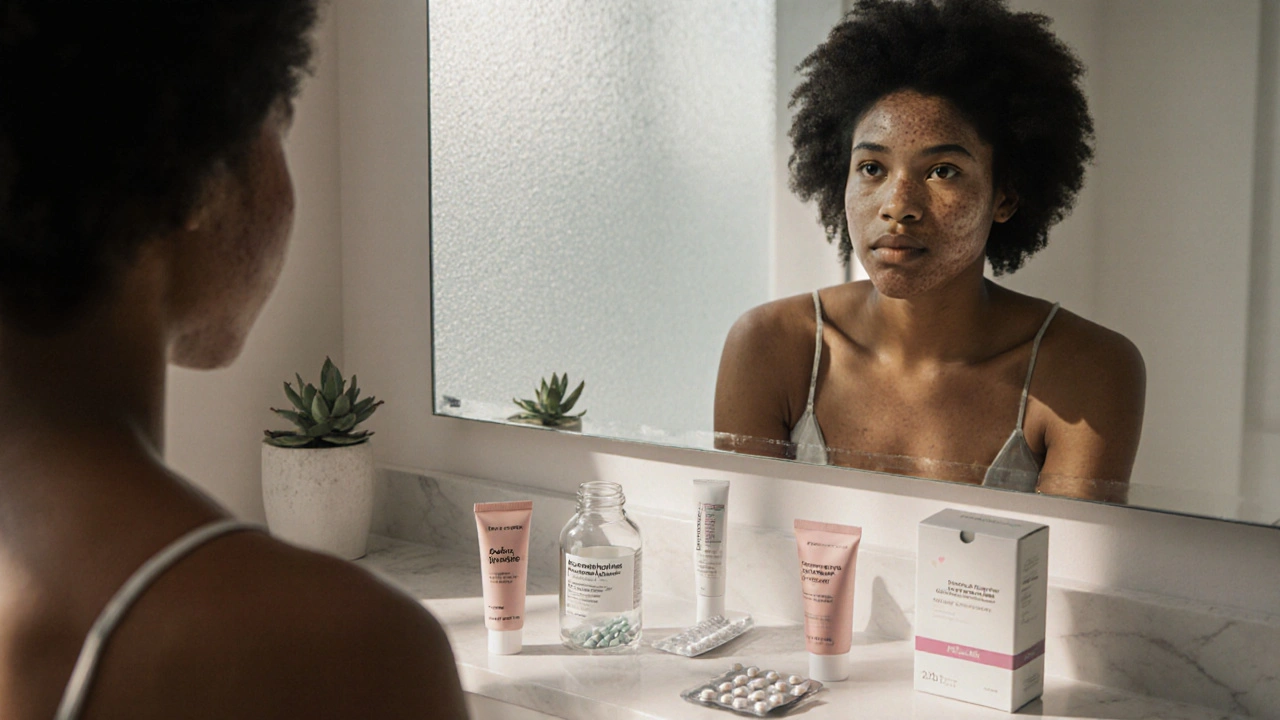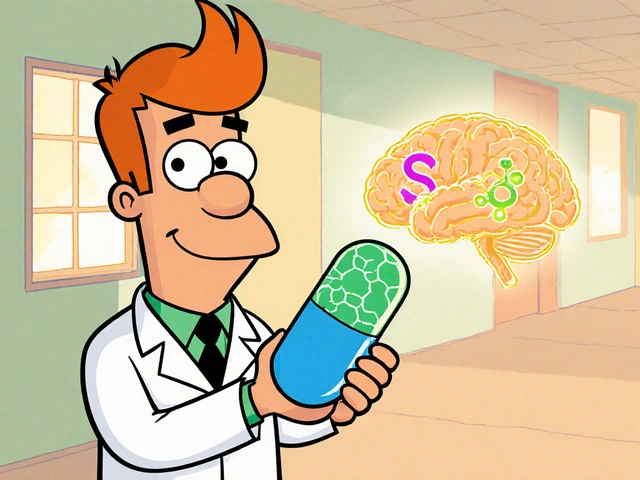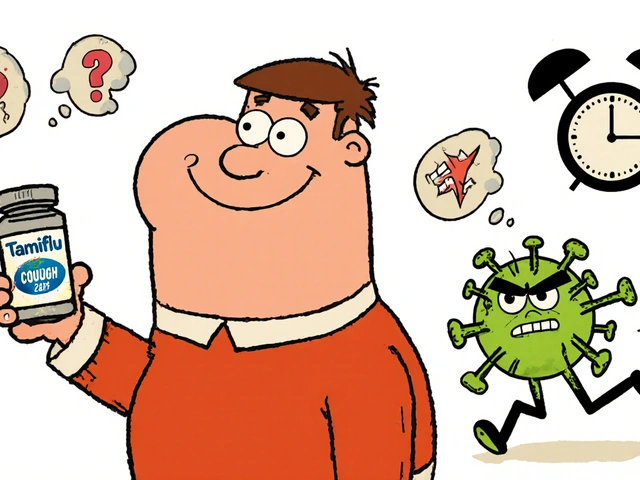Hormonal Acne Therapy: What Works and Why
When dealing with hormonal acne therapy, treatment that targets breakouts driven by hormonal fluctuations. Also known as hormone‑linked acne treatment, it focuses on balancing the skin’s internal chemistry.
First, understand acne, a common skin condition where pores become clogged and inflamed. Not all acne is the same; the hormonal subtype spikes right before periods, during pregnancy, or when stress hormones surge. Recognizing this pattern is the first step in choosing the right therapy.
The root cause lies in hormones, chemical messengers that regulate everything from mood to oil production in skin. When androgen levels rise, sebaceous glands pump out more oil, creating the perfect breeding ground for bacteria. Lowering that androgen impact is why many experts recommend hormone‑focused solutions.
Key Components of Hormonal Acne Therapy
Oral contraceptives are often the go‑to first line. They contain estrogen and progestin combos that blunt androgen activity, leading to less oil and clearer skin. Studies show a 50‑70% reduction in inflammatory lesions after three months of consistent use. The trick is picking a formulation with low androgenic progestins – your doctor can sort that out.
When pills aren’t enough or aren’t an option, spironolactone, a potassium‑sparing diuretic that also blocks androgen receptors steps in. Typical doses range from 50 mg to 200 mg daily, and many users see noticeable improvement within eight weeks. It’s especially handy for adult women whose breakouts linger after puberty.
Topical retinoids, such as adapalene or tretinoin, complement systemic options by unclogging pores and encouraging skin turnover. They don’t affect hormones directly, but they address the downstream effects of excess oil. Starting with a low concentration helps avoid irritation; most people build tolerance over a month.
Diet and lifestyle tweaks also matter. Low‑glycemic foods keep insulin spikes in check, which can otherwise amplify androgen production. Regular exercise lowers stress hormones like cortisol, another hidden agitator of acne. Simple changes—like swapping sugary snacks for nuts or adding a short walk after meals—can boost the results of medical therapy.
In practice, a personalized plan often mixes these elements. A typical regimen might include a low‑androgen birth‑control pill, an afternoon dose of spironolactone, a nightly retinoid, and a few dietary adjustments. Your dermatologist will monitor hormone panels and skin response, tweaking doses as needed.
Safety is key. Oral contraceptives carry a small risk of blood clots, especially in smokers over 35, so a thorough medical history is essential. Spironolactone can raise potassium levels, so people with kidney issues need regular blood tests. Retinoids increase sun sensitivity; a broad‑spectrum sunscreen is a must.
For teens, hormonal therapy is less common; pediatricians often start with topical benzoyl peroxide or topical antibiotics before considering systemic options. When hormones are the clear driver—like severe cystic acne that flares with each menstrual cycle—doctors may still prescribe low‑dose pills even for younger patients, but only after weighing growth considerations.
Tracking progress makes a big difference. Take photos every two weeks, note your menstrual dates, and record any side effects. This data helps your provider see what works and where adjustments are needed, turning a vague trial‑and‑error process into a targeted strategy.
Ultimately, hormonal acne therapy is about restoring balance. By addressing the hormone‑oil‑bacteria triangle, you cut the cycle at its source rather than just treating the surface. Below you’ll find a curated collection of deep‑dive articles that cover each of these treatments, safety tips, and real‑world success stories, so you can pick the approach that fits your life best.




